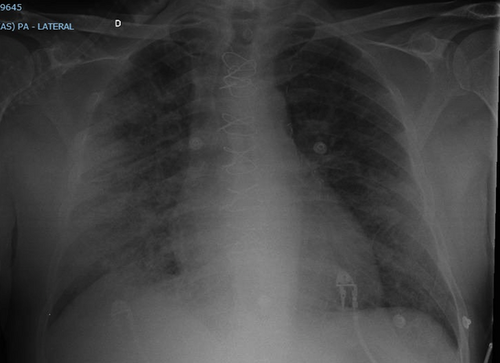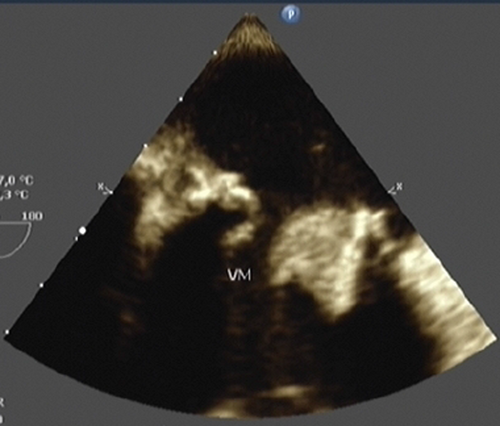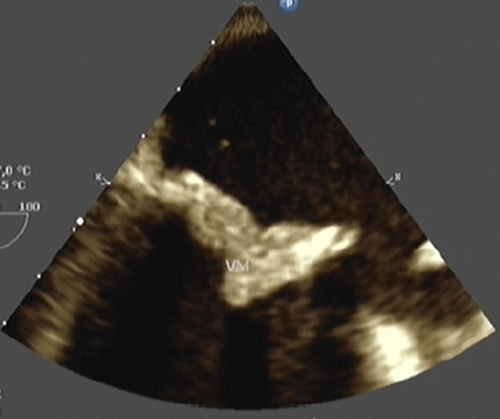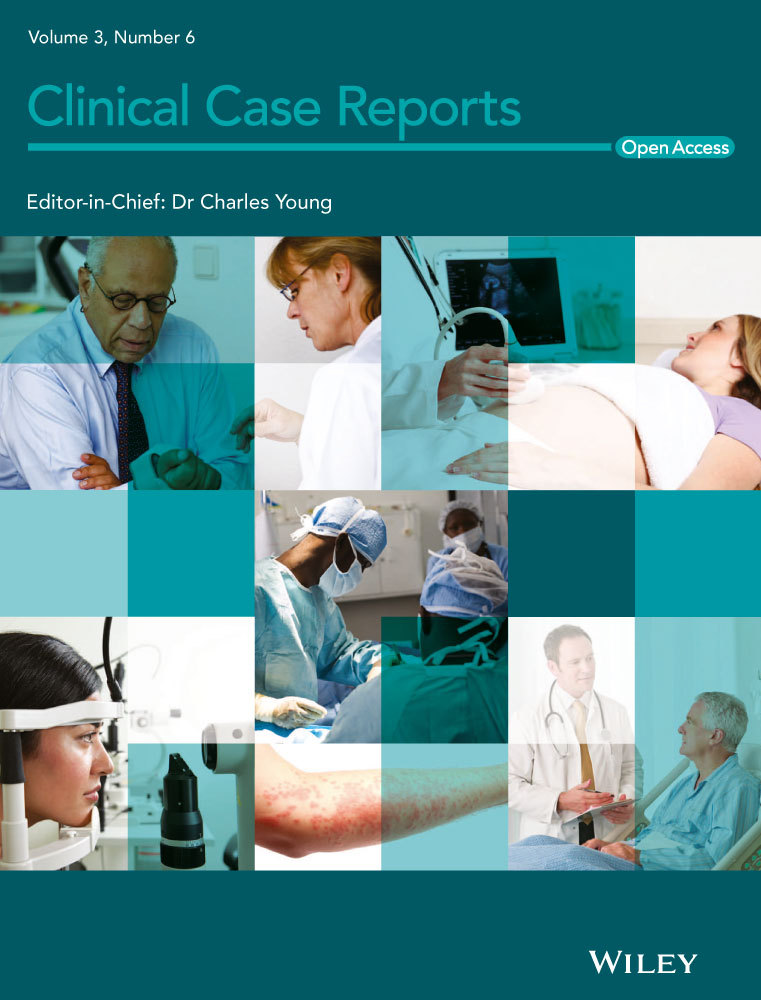Cardiogenic shock due to Gemella morbillorum native mitral valve endocarditis
Key Clinical Message
Gemella morbillorum is a rare cause of infective endocarditis. Consequently, little is known about the natural course of endocarditis secondary to this pathogen. Herein, we report a case of cardiogenic shock as a complication of acute mitral valve regurgitation following Gemella morbillorum native valve endocarditis.
Background
Gemella morbillorum is a Gram-positive, catalase-negative, facultatively anaerobic coccus that often behaves as commensal bacteria of the mucous membranes of oropharynx, gastrointestinal tract, and female genital tract. However, in some rare cases, this bacterium has been implicated in serious invasive infections, especially endocarditis 1. Possible predisposing factors for Gemella morbillorum endocarditis include situations in which there is a lack of the gastrointestinal mucosal barrier integrity, as surgical manipulation of the oral cavity and gastrointestinal tract neoplasia 2, 3. Severe cases of Gemella endocarditis have been reported, both cases requiring cardiac valve replacement and cases with fatal outcome 4; this fact underscores the potential virulence of this pathogen in the setting of infective endocarditis. We present here a case of cardiogenic shock as a complication of acute mitral valve regurgitation following Gemella morbillorum native valve endocarditis in a 72-year-old male.
Case Report
A 72-year-old Caucasian male with a history of hypertension, type-2 diabetes mellitus, peripheral arterial disease of the lower limbs, and previous coronary artery bypass graft surgery was admitted to a tertiary referral hospital in Southern Brazil with dry cough, fever, anorexia, loss of more than 10% of body weight, and dyspnea in the last 30 days. Upon arrival to the emergency department, the patient was hypotensive (blood pressure 78/53 mmHg), tachycardic (heart rate 122 bpm), feverish (axillary temperature 38.4°C), with jugular turgor at 45°, with bibasilar pulmonary rales and with new systolic mitral regurgitation murmur (murmur grade 4). The patient rapidly developed cardiorespiratory collapse requiring mechanical ventilation and continuous infusion of vasopressors; he also presented oliguria (urine output <0.5 mL/kg/h) and signs of poor peripheral perfusion (cold extremities, cyanosis, and capillary refill time >2 sec). After cardiorespiratory stabilization, the patient was immediately transferred to the intensive care unit. The initial chest x-ray showed signs of pulmonary congestion and cardiomegaly (Fig. 1). The complete blood count demonstrated leukocytosis (12 920 White blood cells/mm3) and normocytic anemia (hemoglobin level of 11.3 g/dL). The erythrocyte sedimentation rate and the C-reactive protein plasma levels were elevated (91 mm/h and 6.8 mg/dL, respectively). The transesophagic echocardiography at the bedside showed mitral valve thickening suggestive of infectious etiology and large flail of the anterior leaflet; the mitral regurgitant jet intensity and area were consistent with severe insufficiency (Fig. 2). The bedside lung ultrasound showed bilateral multiple B-lines in a diffuse pattern, which is also compatible with pulmonary edema. A definitive diagnosis of mitral native valve endocarditis with cardiogenic shock due to severe acute mitral valve regurgitation was made. The initial empirical antimicrobial therapy administered was ceftriaxone plus gentamicin (initiated within 50 min after hospital arrival). The hemodynamic instability was treated with norepinephrine (doses up to 1.0 μg/kg/min) and intra-aortic balloon pump counterpulsation implant. The patient was taken to emergency mitral valve replacement surgery; his preoperative mortality risk according euroscore II was 55.2%. Immediately after valve replacement surgery (bioprosthetic mitral valve), there was progressive improvement in cardiogenic shock with gradual reduction of the vasopressor dose. Gemella morbillorum was isolated in two independent samples of blood cultures collected from distinct peripheral veins. Although there is no Clinical and Laboratory Standards Institute (CLSI) standard method and interpretation of susceptibility testing for Gemella, susceptibility testing was performed using the CLSI method for viridans group streptococci on Mueller-Hinton agar supplemented with 5% sheep's blood and incubated at 35°C with 5% CO2 for 24 h 5; the isolated bacteria was sensitive to penicillin, ceftriaxone, and vancomycin. After results of antimicrobial susceptibility tests, the antibiotic regimen was de-escalonated to penicillin G plus gentamicin. During hospitalization, the patient became dependent on mechanical ventilation due to critical illness polyneuropathy and refractory pulmonary congestion (including need for tracheostomy and continuous ultrafiltration in order to negative fluid balance). In the twenty-seventh day of hospitalization, after a brief period of clinical improvement, the patient had a new episode of shock associated with pulmonary edema; there was lung compliance worsening and need for mechanical ventilation with high pressures and high fraction of inspired oxygen. A transesophagic echocardiography showed bioprosthetic mitral valve thickening causing severe stenosis (Fig. 3). The patient was taken to emergency surgery for valve replacement again; however, he ended up dying during the procedure.



Discussion
The present case report describes an unusual etiology of infective endocarditis with unfavorable clinical course despite appropriate treatment, Gemella morbillorum. The clinical course of infections due to this microorganism has been rarely investigated. Although noninvasive infections were reported, the few described cases were generally associated with serious infections, such as endocarditis, bloodstream infections, and central nervous system infections 6-8.
Previously, Gemella morbillorum was considered to be a viridans streptococcus due to its microbiological similarities with the genus Streptococcus; only in 1988, based on its biomolecular and physiological characteristics, this bacterium was reclassified as part of a distinct genus, Gemella 9. However, both the clinical course and the antimicrobial susceptibility patterns of infections associated with this organism seems to be similar to those seen with viridans streptococci 10.
As seen in our case, the virulence of Gemella morbillorum causes concern. The ability of this bacterium to cause destruction of the cardiac valve tissue, contributes to rapid deterioration of patients with endocarditis culminating in cardiogenic shock – a very serious condition associated with high mortality rates in the context of infective endocarditis 11. Septic shock is another reported complication of Gemella morbillorum invasive infections associated with high mortality rates 12. The high virulence profile of Gemella morbillorum is not well studied, but is hypothesized that this microorganism may share the same pathogenic mechanisms found in viridans streptococci bacteria, which are often associated with severe infections in both immunocompetent and immunocompromised patients 13, 14.
In summary, our case report contributes to the limited literature regarding the characteristics of infections by Gemella morbillorum and provides further evidence about the high virulence of this pathogen. Additional studies focused on molecular virulence factors of Gemella morbillorum are required.
Consent
Written informed consent was obtained from the patient for publication of this case report and any accompanying images. A copy of the written consent is available for review from the Editor-in-Chief of this journal.
Acknowledgments
The authors did not have any funding for this work.
Conflict of Interest
The authors have no financial disclosures or conflicts of interest to declare.




